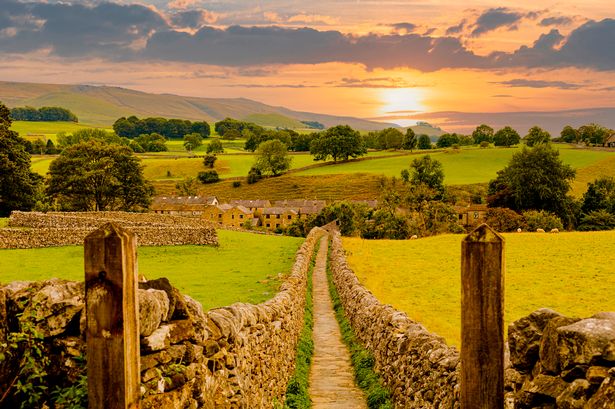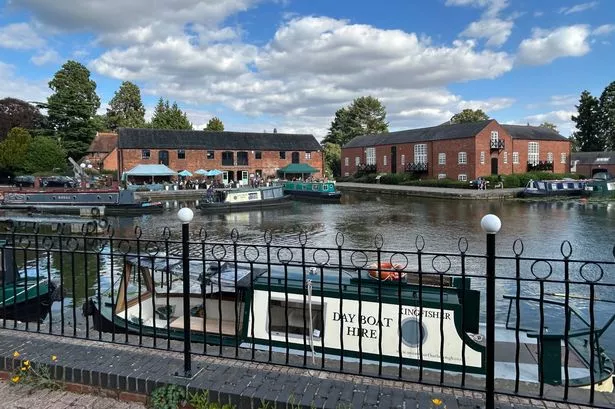It’s not just surviving but thriving.
Tucked away on the UK coast is a seaside town packed full of independent shops and surprises. In its golden heyday, the Victorian age, the Isle of Thanet (the easternmost part of Kent) was packed full of popular holiday resorts. Trend-conscious people like Charles Dickens, swapping the London smog for the revitalising sea air, took the train down to one of them: Broadstairs.
They were enchanted by its sweeping Viking Bay, named in honour of the AD449 Viking invasion of Britain. And with them, they brought riches which helped the small town construct rows of grand houses and an imperial seafront. Unlike many seaside towns hit by the mid-20th-century boom in cheap foreign holidays and the more recent spike in arcade-killing energy prices, Broadstairs is surviving in 2025. In fact, it’s thriving.
I ventured down to the town of 25,000 on a brutal November day to find out if it’s a place that shutters up as the stormy season rolls in and discovered that it has not only found a way to withstand the passage of time but also the winter.
Councillor Kristian Bright, cabinet member for tourism, met me in Salt cafe and explained part of Broadstairs’s success where he told me: “It is one of the only places in Thanet that has an independent high street like this. 15 Square Metres is a great restaurant run by MasterChef finalist Tony Rodd. We have Bar Ingo. I love to spend an evening in there. There’s Kebbells Seafood Bar as well. There’s just so many great places. In the winter, people come down and have a really special time.”
In a way many other coastal spots are not, Broadstairs is protected from brutal seasonal swings by its changing population. The launch of Southeastern’s high-speed rail line in 2009 drew the town a commutable ride from London, while the working from home shift of Covid ensured those down from the capital could stay full-time.
Palace Cinema owners Corinna Downing and her husband Simon Ward are among their number, and now benefit from the new demographic’s love of foreign film. “The notion of local and independent cinema, with its own character, has worked in our own favour,” she explained.
The Palace is the only independent cinema in the area and now draws in punters from across Thanet. Winter, particularly Oscars season, is their time to shine. When they’re not busy showing Imitation of Life and L’Atalante, the cinema is being hired out by members of the thriving local film society – on one recent occasion, for a raucous Austin Powers dress-up night.
Just down the seafront is another business that makes the Palace’s 60-year history look fleeting. Mario Morelli opened an ice cream parlour bearing his family’s name in 1932, and his descendants are still serving up impossibly big sundaes almost 100 years later. Morelli’s is a testament to the idea that if a business does things well and looks after its staff and customers, it will succeed. On the grimmest of midweek mornings, its sensationally big ice creams, waffles, and coffees drew in 30 punters.
Chris Chalklands, the former manager and now semi-retired parlour prince, has been working there for 53 years. He explained what makes Morelli’s so special. “It’s a family-run institution. It’s more of your community hub (in the winter) retreat. We go down about 50% in the winter, but our busiest day is Boxing Day. Everybody comes out for a walk. From 10 to five, it’s standing room only. Broadstairs has changed from a bed and breakfast holiday resort to an Airbnb. I love the atmosphere, community, and general population,” he said.
Hussein, who runs the Fish Inn on the High Street, swapped his home country of Turkey for Broadstairs 15 years ago. More than Morelli’s and The Palace, his business is impacted by the winter months. “It’s a nice place in the summer. I’m not sure about the winter when it’s rainy, but generally it’s good. It’s a nice beach, there’s no trouble. In winter, it’s cold, people don’t want to come out.”
While I was the only chip eater that Wednesday morning, that might’ve been because a gale was flinging rain and fish and chip signs down the road. Usually, a steady trade of students from a local language school and deliveries keeps the 34-year-old Fish Inn ticking over.
There are, of course, tensions in Broadstairs. As they tend to, DFLers have brought money and pushed up house prices. The average home now costs £409,441, according to Rightmove, while the average worker in Thanet takes home £29,312. The pull of its incredible beach and tidal pool during the summer means there is a significant drop-off in tourism in the winter, which can be challenging for businesses.
But these issues seem relatively small and manageable. The council recently introduced a second-home tax, which saw Broadstairs property prices fall by the highest amount of anywhere in the UK last year. Add to that a high street packed with independent shops, and off-season events such as the Blues Bash and Food Festival, and the future prospects of this little coastal gem seem very strong.






